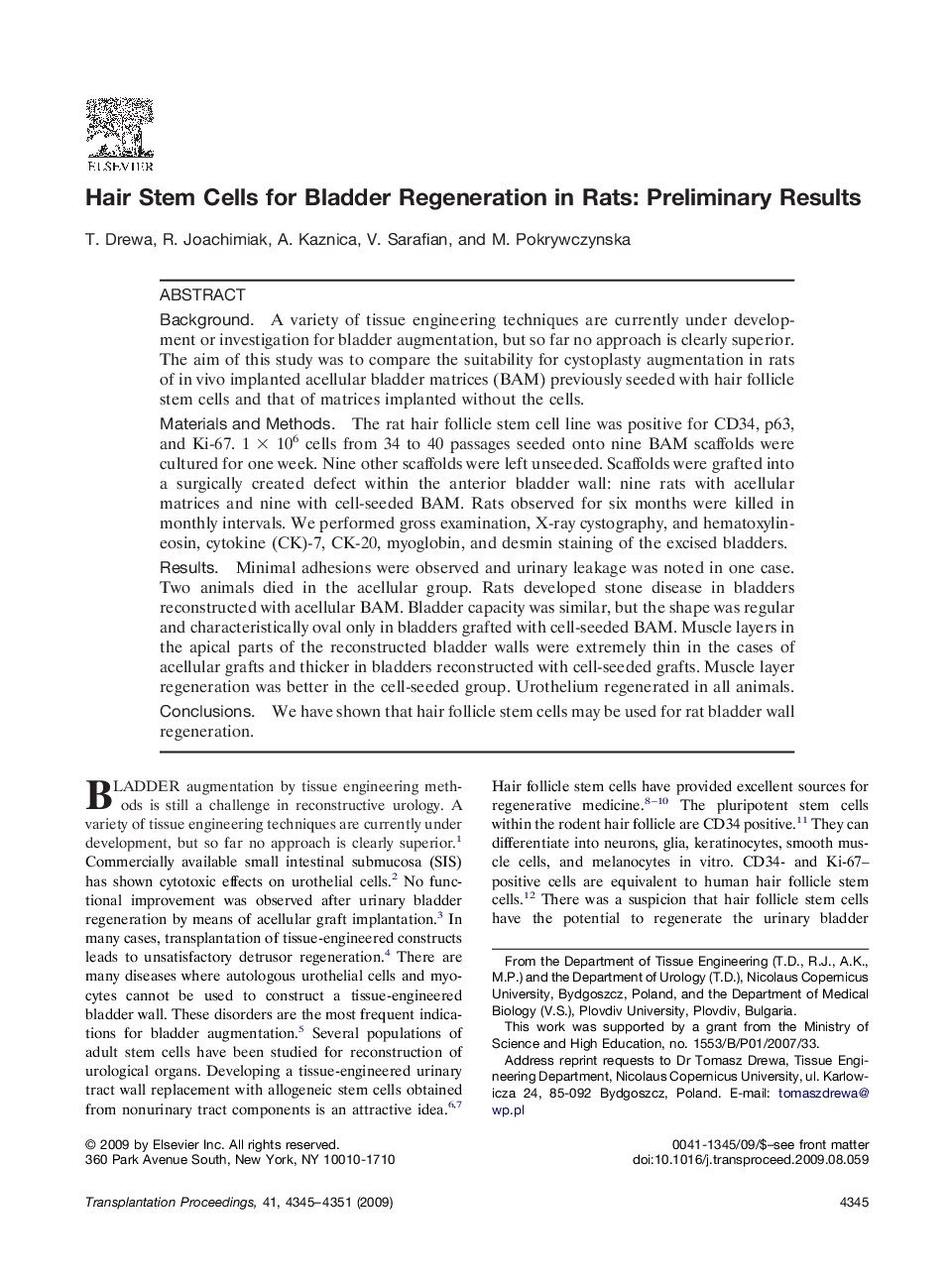| Article ID | Journal | Published Year | Pages | File Type |
|---|---|---|---|---|
| 4258516 | Transplantation Proceedings | 2009 | 7 Pages |
BackgroundA variety of tissue engineering techniques are currently under development or investigation for bladder augmentation, but so far no approach is clearly superior. The aim of this study was to compare the suitability for cystoplasty augmentation in rats of in vivo implanted acellular bladder matrices (BAM) previously seeded with hair follicle stem cells and that of matrices implanted without the cells.Materials and MethodsThe rat hair follicle stem cell line was positive for CD34, p63, and Ki-67. 1 × 106 cells from 34 to 40 passages seeded onto nine BAM scaffolds were cultured for one week. Nine other scaffolds were left unseeded. Scaffolds were grafted into a surgically created defect within the anterior bladder wall: nine rats with acellular matrices and nine with cell-seeded BAM. Rats observed for six months were killed in monthly intervals. We performed gross examination, X-ray cystography, and hematoxylin-eosin, cytokine (CK)-7, CK-20, myoglobin, and desmin staining of the excised bladders.ResultsMinimal adhesions were observed and urinary leakage was noted in one case. Two animals died in the acellular group. Rats developed stone disease in bladders reconstructed with acellular BAM. Bladder capacity was similar, but the shape was regular and characteristically oval only in bladders grafted with cell-seeded BAM. Muscle layers in the apical parts of the reconstructed bladder walls were extremely thin in the cases of acellular grafts and thicker in bladders reconstructed with cell-seeded grafts. Muscle layer regeneration was better in the cell-seeded group. Urothelium regenerated in all animals.ConclusionsWe have shown that hair follicle stem cells may be used for rat bladder wall regeneration.
